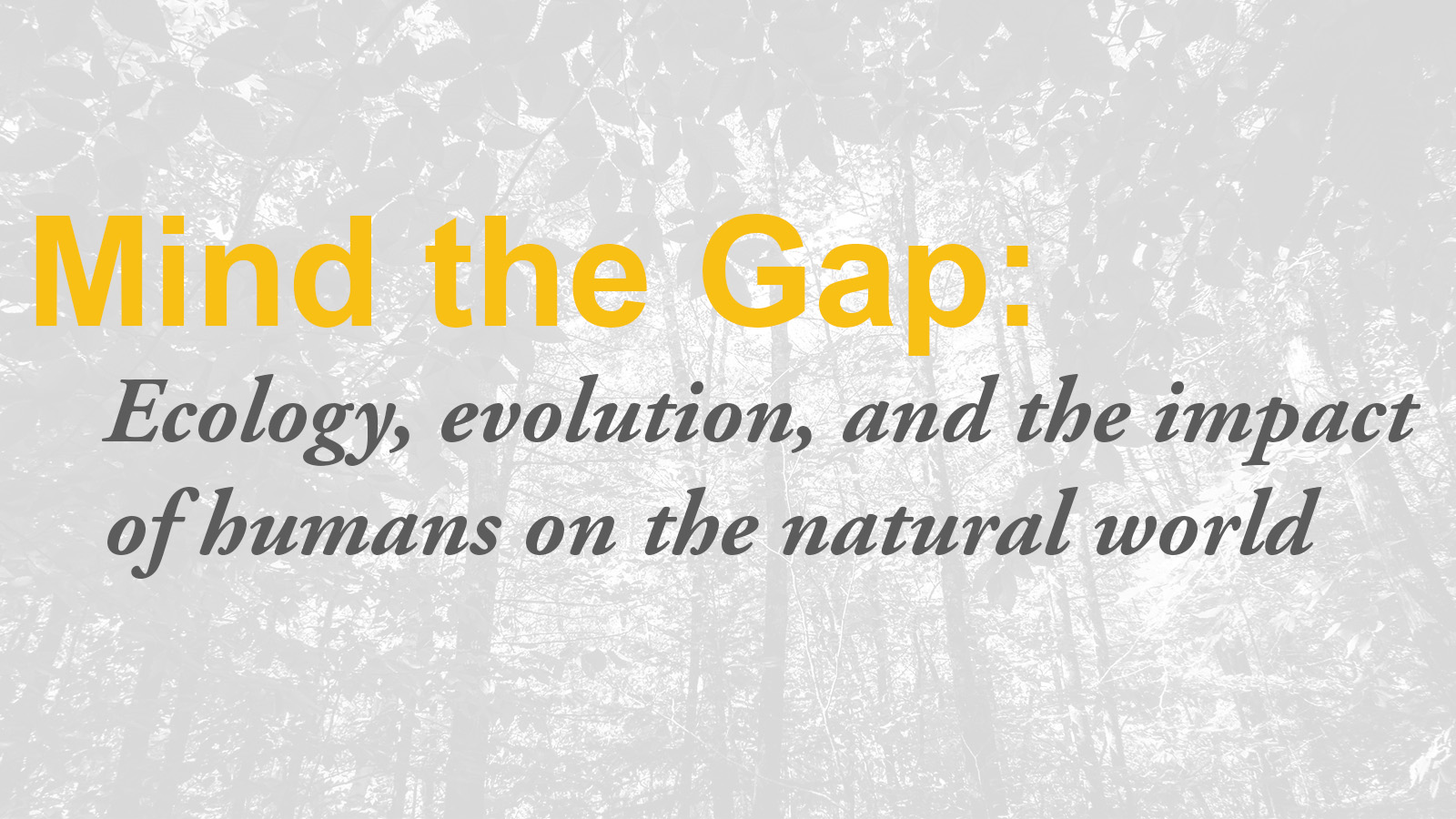
Mind the Gap: Ecology, evolution, and the impact of humans on the natural world
By Stefania Irene Marthakis
The poet Charles Baudelaire defined modernity as “the ephemeral, the fugitive, the contingent, the half of art whose other half is the eternal and the immutable.” Given the time-sensitive nature of modernity, “this transitory, fugitive element, whose metamorphoses are so rapid” that once uncovered, offers yet more to unearth.
In the paper, The pace of modern life, revisited, Michael T. Kinnison and Zachary T. Wood (University of Maine Professor of Evolutionary Applications and Postdoctoral Researcher/Adjunct Professor, respectively), along with Andrew Hendry and a network of collaborators connected with McGill University in Montréal, aim to understand global patterns of human effects on ongoing evolution in nature. Specifically, how rates of phenotypic evolution (the evolution of expressed traits) in wild populations respond to environmental changes.
This paper is a long-term output of a project — which included the original paper, Perspective: The Pace of Modern Life: Measuring Rates of Contemporary Microevolution — that Kinnison and Hendry started in the 1990s. They began with a database, The Phenotypic Rates of Change Evolutionary and Ecological Database (PROCEED), of around 100 rates of evolution, asking how fast does evolution occur? Kinnison and Hendry concluded that evolution is very common and often very fast on humanly observable time scales of years to decades. This research revealed several often-overlooked patterns of what is commonly called contemporary evolution (i.e., evolution within a handful of generations), which can occur quickly enough to interact with ecology and be affected by human impacts. PROCEED now has over 6,000 measured rates of contemporary evolution, which opens the field to ask large-scale questions about the nature of evolution.
As Kinnison noted, “Even early in our database development, it seemed that many of the fastest rates of contemporary evolution were associated with human activities like fisheries harvest, pollution, and species invasions, but with only a limited number of case studies to work from the results were more tantalizing than conclusive. Fortunately, the tantalizing nature of those early analyses encouraged a lot more research by others that we were able to build into our database.”
As part of the NSF EPSCoR RII Track-2 grant, GECO (Genomic Ecology of Coastal Organisms: A Systems-Based Research and Training Program in Genome-Phenome Relationships in the Wild), Kinnison and Wood lead part of the research effort studying links between ecological interactions and natural selection happening during those interactions. Specifically, when evolution is present during ecological dynamics (i.e., when living things interact), which is called eco-evolutionary (eco-evo) dynamics. Looking at predator/prey eco-evo dynamics, Wood explained, “When a predator is consuming a prey, what happens when the prey can evolve defenses during those dynamics? For example, how fish develop a morphology for swimming away quickly, hiding behaviors, and predator inspection behaviors. How does that change the interactions between predator and prey?”
With more rates of evolution to work with, along with a strong underpinning of how evolution and ecology interact with each other (including an average rate of evolution), researchers can now be more specific and more conclusive—as well as break down this large amount of data from different impacts. Wood has focused on how human impacts affect evolution (e.g., pollution, non-native species, landscape change).
Wood stated, “Universally across the board, nearly all effects that humans have had on evolution are to speed it up. The differences are massive —doubling, tripling. For example, pollution causes the rate of evolution to speed up ten times faster than typical evolution in the wild.”
Researchers can now confirm earlier data with this new data and say with certainty: Yes, humans speed up evolution. Although, in the case of pollution, it is not known whether the increase in the rate of evolution will be sustainable enough to save many populations, as that is an ongoing question in eco-evo dynamics.
“What originally drew me to science was problem-solving,” stated Wood, who started a 2-year appointment in fall of 2022 at Colby College in Maine, designing inclusive courses for students that will weave ecology, evolution, and natural history together. “But what draws me to evolutionary ecology is that there is so much we don’t know—everywhere you look, there’s a gap that we need to fill in. There’s all this hidden evolution right before our eyes.”
An inquiry into the gaps (the transitional zones that sometimes produce more gaps) is what follows, each year’s research allowing for the ability to ask more questions. Through the GECO project, Kinnison and Wood have studied whether the rate of evolution looks different in individual organisms, individual traits, or in response to different human impacts, and whether contemporary evolution is a source of resiliency.
Wood’s assumption is “humans are tightening the interactions between ecology and evolution”—an idea that Kinnison and Wood proposed in their recent paper, The Importance of Eco-evolutionary Potential in the Anthropocene. Mind the gap. The question now becomes: “What are the consequences of this new world of stronger, more intense eco-evo interactions?”
“Humans are having a profound impact on the natural world,” Wood concluded, “while we knew that, but through an evolutionary lens as well. The interaction of ecology and evolution and what that means is still unknown.
